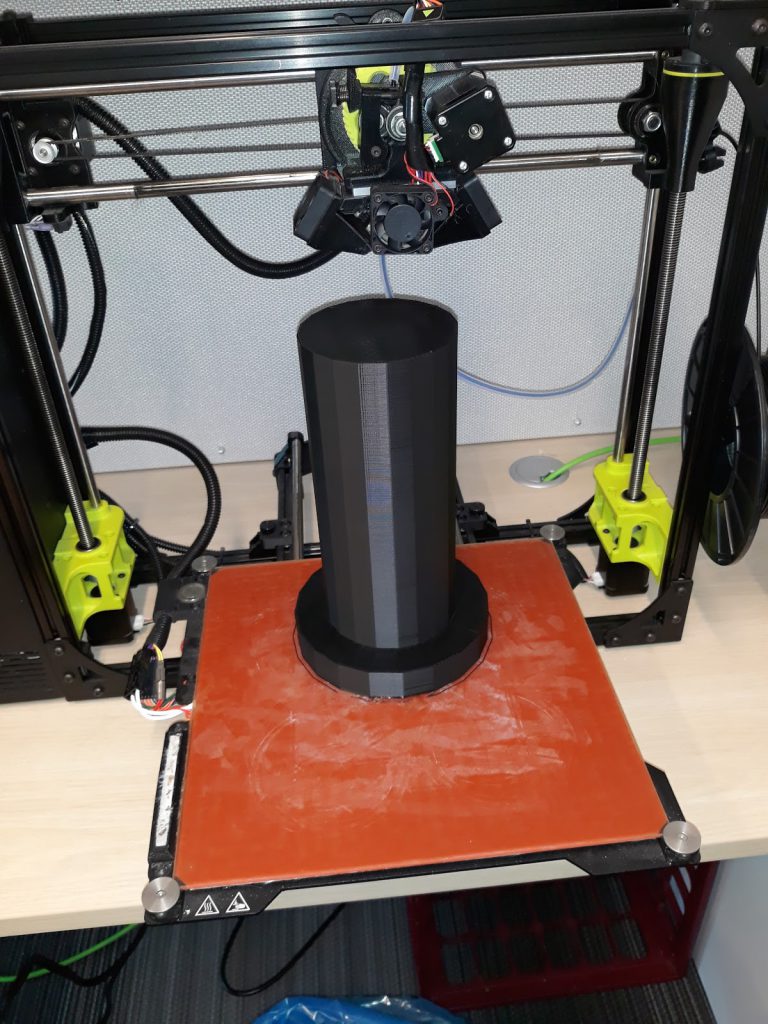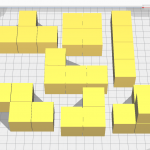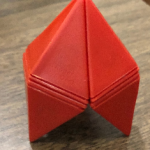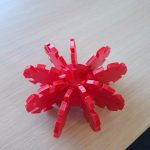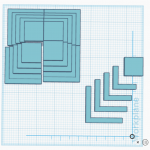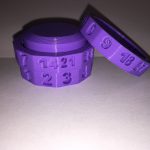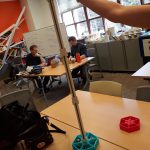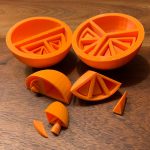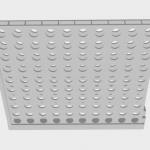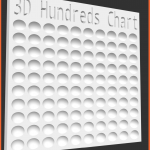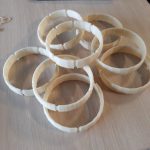Month: July 2019
Ball of Whacks
The “Ball of Whacks” is a rhombic triacontahedron with magnetic parts that disassemble into individual rhombic pyramids. It is unique among the Maker projects listed on this website because it is a pre-existing, pre-made object that was purchased for the purpose of the class. The Makers of this project originally wanted to create an object to introduce students to geometry, and help them conceptualize the idea that parts deconstructed from a whole can be put back together in a variety of different ways. Through their design process and inquiry, they discovered the “Ball of Whacks”, and decided to repurpose it as a mathematical manipulative through thoughtful problem solving tasks among different grade levels. The tool also invites students to use it in a creative, playful way. The Makers propose that, in the classroom, “teachers will not tell the children what to create, but rather let them explore the shapes on their own and create their own unique shapes.” Ultimately, the Makers used it as a tool to introduce students to angles, shape variation, and fractions through composition and decomposition.

Grouping Discs
Click here to download the stl file for the above picture.
The Maker of the “Grouping Discs” designed a manipulative intended to help students count, add, subtract, and make groups of ten. She explains, “The grouping discs I have created and designed have nine slots in them so that up to nine additional discs can be added to the base disc to make one group of ten. More discs can be inserted into the slots on any of the other discs that are attached to the base disc. By doing so, students can not only add and subtract using direct modeling, they can gain a sense of base ten while also having fun creating their model.” “Grouping Discs” can be a very exciting and expansive manipulative for students as they build grouping and base-ten understandings through dynamic and exploratory interactions with the object.
MultiPartitions Tool
Click here to download the stl file for the above picture.
The Maker of the “MultiPartitions Tool” wanted to create a tool that would help engage students in the mathematical ideas of skip counting, multiples and multiplication, fractions, and geometry. She ultimately created a set of tools, and explains, “The manipulatives are comprised of various shapes, and then the shapes are cut into different numbers of pieces based on the number they represent, and each shape has multiple ‘nesting’ layers.” These nested layers will assist the user in skip counting by that particular number as they are added to or taken away from the manipulative. For example, the user explains the case of the number two: “It will show them the starting number of two in the center and then two more outside of that to show four, and then two more to show six, and so on until ten. These shapes will help students visualize how numbers increase when added to themselves.” By understanding multiples, the student will be prepared to gain a deeper understanding of multiplication and division. In addition, the nesting quality of the tool may help students conceptualize fractions. For instance, each layer could be seen as one whole decomposed into 4 fourths. Then the accumulated pieces from 5 layers would represent 5 sets of 4 fourths. The “MultiPartitions Tool”, as evident from its title, refers to both multiples and multiple partitions. It provides a venue for exploring geometric shapes as well, and ultimately serves as a versatile, exciting tool to help students explore mathematical ideas.
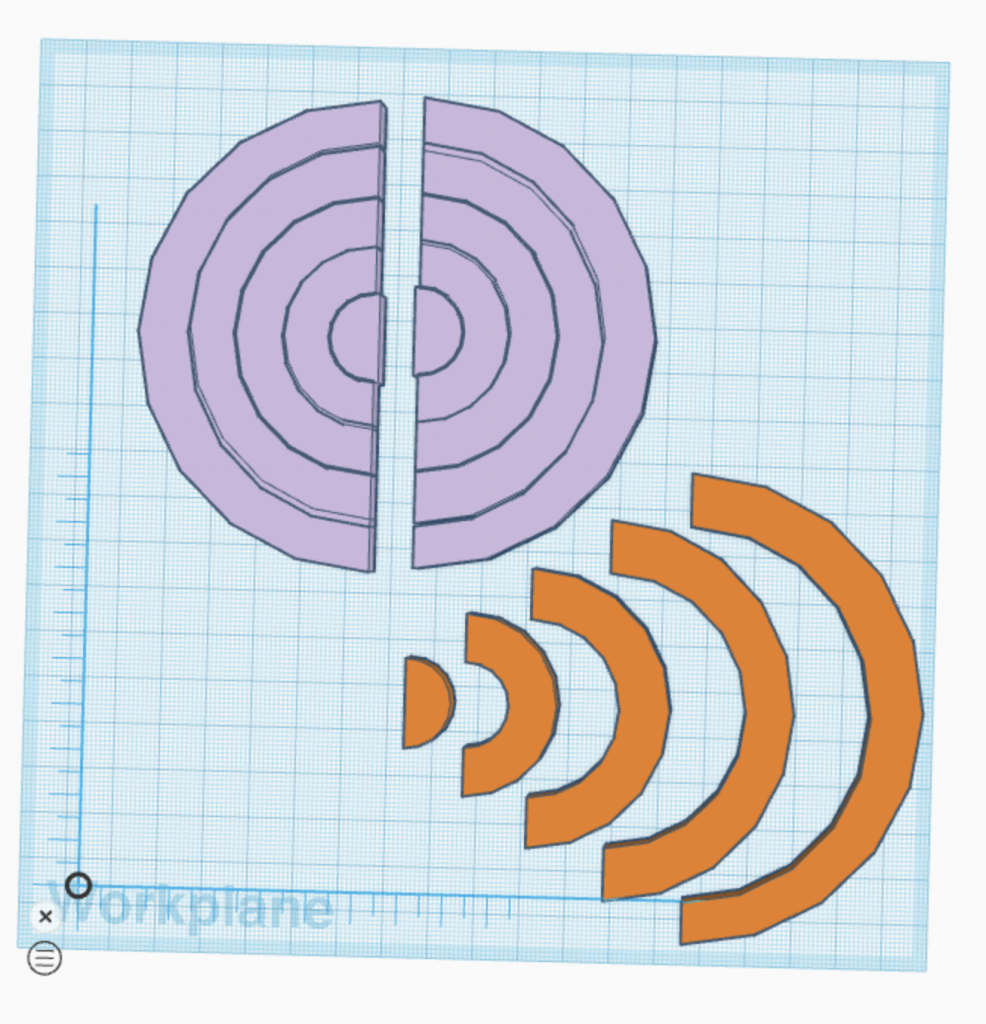
Multiplication Decoder Ring
Click here to download the stl file for the above picture.
The Maker of the “Multiplication Decoder Ring” describes her tool as a way to help children learn how to multiply in a fun way using both visual and tactile experience. The Maker explains that, “The idea of turning the wheel and visually seeing the numbers in the times table provides a new visual recall to the student. Instead of visualizing a chart, they can recall a moving object with each click of the wheel producing a new number … [It also] allows the student to explore different methods of learning their multiplication tables.” This concrete, physical experience will reinforce concepts through physical integration of learning multiplication facts. The kinesthetic experience of the tool is very important, as the Maker explains when she says, “Moving the wheel the number of times the student wishes to multiply by keeps them engaged in the thought process and allows them to stay mentally and physically engaged in the learning process…the ability to stack the rings allows the student to compare different times tables to learn the differences and similarities of patterns in times tables.” The “Multiplication Decoder Ring” acts as a powerful tool in helping a student solidify their multiplication fact recall abilities.
No Mas Caídas
Click here to download the stl file for the above picture
The Makers of the tool “No Mas Caídas” created a manipulative that allows a student to visualize and keep track of their counting. The tool itself has an eye-catching, highly interactive design, and offers the user a dynamic experience as they use marbles to aid in their counting. The Makers say, “The design behind our tool technology [allows] the child to stack whatever piece or object it is that they are working with on top of the other one.” This is important to highlight because the audience can see how this tool would allow students to physically see their work as they add the marbles or any other object into the structure. The elegance and utility of the tool is explained through example by the Makers: “Without having to count all twenty-one objects in total, the student could use the ruler to see almost instantly what twelve blocks looks like against the ruler… It also helps students make sense of number decomposition, as the ruler can help students recognize how the counting numbers are embedded in each other, allowing the student to construct knowledge that will be useful in breaking numbers apart (and together).” “No Mas Caídas” is an exciting, culturally relevant, and interactive tool that engages children and allows them to construct their own strategies and understandings of quantities, addition, and subtraction.
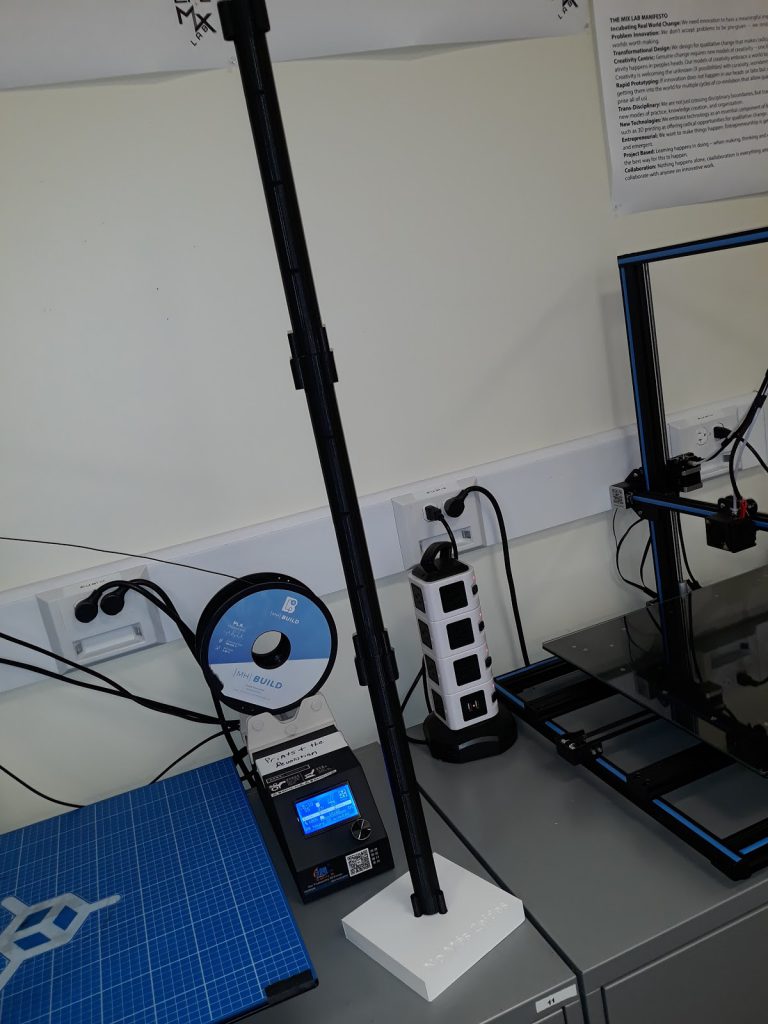
Fraction Orange
Click here to download the stl file for the above picture.
The Maker of the “Fraction Orange” created a manipulative with the intention of building a “physical understanding and conceptualization of fractions” in the user. She explains that it “is intended to help children understand how parts can interact with their whole in order to help them conceptualize dealing with fractions on a deeper level.” Through interactions with the tool, a student will be able to explore the physical experience of their own fraction strategies and ideas, and aid them in comparing fractions and fraction division problems. The tool is also meant to be used in an exploratory way, and in doing so, the user will be able to make sense of the nested nature of the pieces in order to experience how its pieces are partitions of a whole. The Maker explains, “As the child starts to uncover (dare I say “peel”) the different compartments of the orange, they will discover how a whole can be divided into different parts (slices) equally.” In contrast to flat, linear traditional fraction strips, the “Fraction Orange” gives children the opportunity to experience concrete, kinesthetic representations of concepts, which will in turn build their understandings of the relational qualities of fractions.
Connect 10
Click here to download the stl file for the above picture.
The Maker of “Connect 10” tells us that she created a manipulative in order to help students gain “a better understanding visually of multiplication, [which in turn will] allow the user to gain a better understanding of multiplication facts.” By using “Connect 10”, the user will be given the opportunity to explore the concepts of multiplication in a way that will provide them with flexible thinking rather than reliance on the typical memorization of multiplication tables. The Maker explains its use: “The user will use the manipulative to build their way from a factor to a product by finding the missing factor. They will be able to visually see the starting factor and how they will be able to get to the end or product. The array that they will have to create will allow for them to know what this missing factor is. This will be done by having to create a [rectangular] figure.” It is important to point out that the maker of this tool wanted to create something familiar that would invite students to interact with it while they work towards finding solutions and building mathematical connections.
3D Hundreds Chart
Click here to download the stl file for the above picture.
The Makers of the “3D Hundreds Chart” designed a tool to help students visualize and experience their learning of base-10 concepts and rounding numbers to the nearest tens place. The Makers explain, “If a child is asked to estimate the number 6 to the nearest tenth, they can use [the] manipulative to fill 6 small individually carved out spaces to be able to see there are only 4 spaces more to get to 10 and 6 spaces to go back to zero… By inserting manipulatives into the individually carved out spaces on the chart, [students are] able to see where a particular number falls to understand if the number should be rounded up or down to the nearest tenth.” This type of problem is facilitated by interaction with the manipulative, as it was created to assist the students through productive struggle in order to develop their own strategies to find solutions. Another important aspect of tool is that the “‘3D Hundreds Chart’ allows the user to understand numbers in a variety of ways including understanding numbers as individual units of ones and also understanding numbers as groups of tens.” This is a vital concept for students to learn in order to understand place value and other subsequent mathematical ideas.
Samantha Circles
Click here to download the stl file for the above picture.
The Maker of “Samantha Circles,” designed a tool intended to facilitate student understanding of fractions. She explains the structure of the object: “My design is a series of rings that rest on a cylinder. The rings are the main aspect of the design, the cylinder is merely for storage and to assist in manipulation.” The tool allows the user to move the rings in relation to one another in order to compare different fractions between 0 and 1. The Maker that her motivation behind the design was that “for many students, they understand numbers, but fractions are tricky because they require students to visualize that bigger numbers are actually smaller, and smaller numbers are bigger.” “Samantha Circles” provides the user with a tangible experience of this concept. In addition, the Maker explains, “Each student could use it in a completely different way to achieve the same result, and that was my main goal with this manipulative.” This illustrates that the tool has its own magic, and that a student can use it in a variety of ways to arrive at their own solution. Finally, the tool’s unique shape is intriguing and promotes student interest in the manipulative, prompting them to explore in order to gain deeper mathematical understandings.
